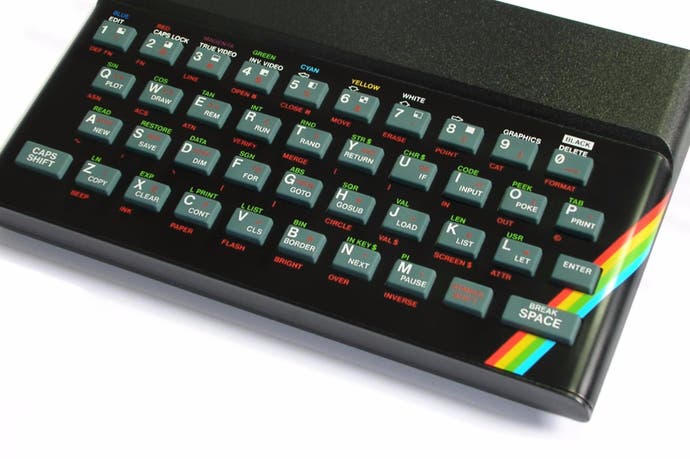10 games that defined the ZX Spectrum
Retrospeccy.
In its early promotional material for the ZX Spectrum, Sinclair often went to almost painful lengths to avoid using the word 'games'. Released 35 years ago this month, the microcomputer was designed by Sir Clive Sinclair with serious applications in mind, and an optimistic role as a central hub for the nation's households. Constantly reiterating its expandability, these initial adverts were all about tech, emphasising the Spectrum's 'massive' RAM of 16 or - crikey! - 48k, as well as its high resolution and accessories, including a printer and the doomed ZX Microdrive. As it turned out, the manufacturer was swimming against the tide. Programming? Hmm, might try and type in a few POKEs I suppose. Educational? Game of chess or Scrabble aside, not likely. No, what the majority of kids wanted from the Spectrum was games. And games, much to the chagrin of Clive Sinclair, were what they got - in their hundreds.
Picking 10 of them is almost impossible - I could have done 20 or 30. But using a combination of criteria such as technical achievement, popularity and sheer imagination, I've settled for this dectet of superlative efforts that are surely lodged in the memories of even the most casual Spectrum owner.
Horace Goes Skiing - Psion (1983)
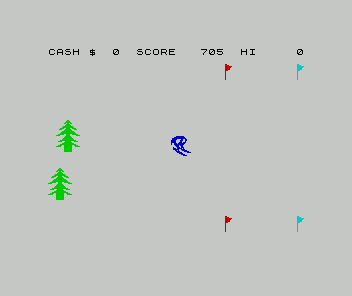
This was the closest the Spectrum got to a bona fide mascot in the vein of Mario or Sonic The Hedgehog, though no-one was ever quite sure what Horace was supposed to be. The globular... thing had made its debut a year earlier in the Pac Man clone Hungry Horace. Appetite presumably satisfied, Horace was ready to take on the piste, although he needed to obtain his equipment first, courtesy of a ski shop that sat rather inconveniently on the opposite side of a busy road. As a pack-in title for many Spectrum bundles, Horace Goes Skiing found its way into the hands of most Spectrum owners, and was a decent, if brief, stab at simulating the sport, not helped by designer William Tang's taste for recklessly-driven ambulances.
See Also: Horace And The Spiders - Psion (1983)
Jet Pac - Ultimate Play The Game (1983)
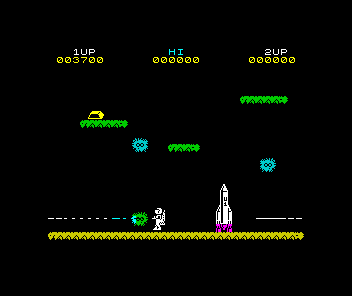
While the company was quite rightly renowned for its isometric games, it was with 2D classics such as Sabre Wulf, Tranz Am and this fantastic shooter that Ultimate first made its name. Released at a time when many commercial games still contained reams of BASIC code, the smooth and exciting gameplay of Jet Pac elevated it comfortably above its peers, despite being confined to just one screen. The objective was as compelling as it was simple: parts of Jet Man's rocket descended from above and had to be picked up and dropped in a specific order. Once assembled, our valiant spaceman had to fuel his craft using a similar method before jetting off... to the same screen again, and another host of oddly-shaped, yet deadly aliens. A genuine classic that remains as playable today as it was 34 years ago, and squeezed rather incredibly into just 16k of memory.
See Also: Deathchase - Micromega (1983)
Jet Set Willy - Software Projects (1984)

Manic Miner may have come first (although that game itself was obviously inspired by 1982's Miner 2049er), but it was with this sequel that creator Matthew Smith entered Spectrum folklore. Referred to apocryphally as 'Jet Set f***ing Willy' by Alexander Armstrong, playing Sir Clive Sinclair in the BBC drama Micro Men, it was the game more than any other that became associated with the Sinclair machine. Despite an infamous bug that rendered it impossible to complete, Jet Set Willy's open-ended gameplay - the player was free to explore the hero's mansion as they wished, tidying up the wreckage after a legendary party - and bizarre themes cemented its reputation as a classic, creating in the process the first bedroom coder superstar. Mind you, shouldn't Willy's portly housekeeper Maria have been cleaning up the mansion? What exactly did he pay her for - pointing?
See Also: Manic Miner - Software Projects (1983)
Daley Thompson's Decathlon - Ocean (1984)
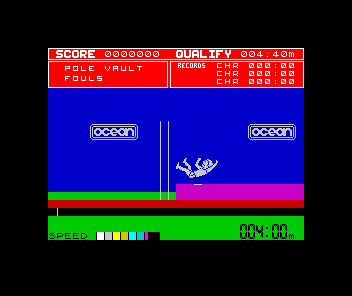
Poor old Daley Thompson. The Olympic, Commonwealth, World and European Gold medalist may have had a stellar career, but 33 years after this game's release he's remembered by many gamers mostly for ruining their prized Quickshot joysticks. The game itself was a blatant Track and Field rip off, and one of the earliest examples of a sporting star license, with each of the ten events requiring either precise timing or a bruising mashing of keys. Of course, the Spectrum's dead flesh keyboard wasn't exactly the best for frantic and sweaty use, so it was over to the Kempston joystick interface in order to get Daley up to speed. A huge seller for Manchester-based Ocean Software, who would continue the franchise with Supertest (1985) and Olympic Challenge (1988).
See Also: Hyper Sports - Imagine (1985)
Knight Lore - Ultimate Play The Game (1984)
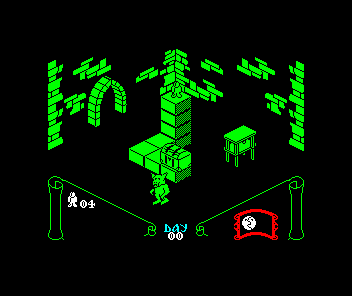
It's sometimes hard to look back and assess the effect that a game had in its day, and the huge range of copycat isometric games released in the wake of Ultimate's Knight Lore certainly did much to soften its impact. Still, its achievement can't be overstated. Taking control of the valiant Sabreman from previous games, Sabre Wulf and Underwurlde, the player explored a beautiful faux-3D world, searching for the six items they could boil up into a cure for their troublesome lycanthropy. The game's clean, elegant graphics aside, Knight Lore's programmers the Stamper brothers simplified the tricky controls that had dogged the genre, and in doing so created not just a classic but a gameplay style that came to define the ZX Spectrum.
See Also: Head Over Heels - Ocean (1987)
Lords Of Midnight - Beyond Software (1984)

Let's be honest: basic shooting was one of the ZX Spectrum's biggest draws. But for those prepared to try something different, Mike Singleton and Beyond Software provided the remarkably in-depth and atmospheric Lords Of Midnight, so demonstrating what the platform was capable of once a coder's imagination was set free. Taking on the role of Luxor The Moonprince, players would recruit loyal forces from various citadels located around the land of Midnight, a grim country plunged into darkness by the recently-awoken evil Doomdar. Lords Of Midnight's wonderful storyline (inspired, unsurprisingly, by The Lord Of The Rings), open-world gameplay and elegant graphics were one thing - its seemingly effortless welding of the traditional adventure game to these features set a new standard for software that remains an amazing feat over 30 years later.
See Also: Shadowfire - Beyond Software (1985)
Skool Daze - Microsphere (1985)
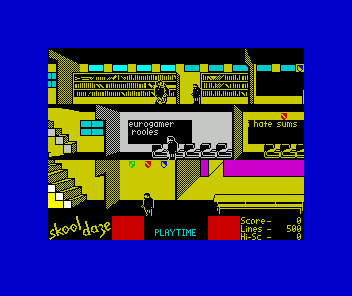
Skool Daze wasn't only a landmark game for the Spectrum - it encapsulated an era. Here was a snapshot of 80s school life, complete with a shaggy-haired bully, bespectacled swot and cane-bending patriarch, doling out lines should the player (Eric) step out of line. There was an entire school to wander freely around, interacting with its other inhabitants while attempting to activate numerous wall-mounted shields. Completion of this far-from-easy task confused the teachers, helping Eric to extract clues as to the combination for the headmaster's safe which contained his damning school report. Perhaps the most ingenious move by the game's designers was to include the option to rename all the characters, allowing players to add a real-life frisson to this digitized version of the so-called best days of your life.
See Also: Back To Skool - Microsphere (1985)
Bomb Jack - Elite (1986)
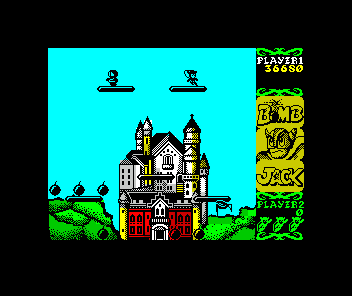
By 1986, the Spectrum was reaching its peak, and big-budget licensed games were beginning to dominate the market. The conversion of arcade games seemed a particularly hopeless proposition - the technological gap between the cabinets we gorged with loose change up and down the country's seaside towns and the unsightly attribute-clash and farty sound effects of the Spectrum seemed impossible to bridge. One game that managed it was Elite's Bomb Jack. Each screen contained a deviously-arranged cluster of bombs to collect (plus a few pesky mummies and birds), with lit bombs awarding extra bonus bar points. It was hardly complicated, but with its nimble, precise controls, smart graphics and speedy gameplay, this arcade conversion quickly became revered as one of the best titles on Speccy - and proof that in the right hands, the home computer could offer the same quality of experience as its coin-op brethren.
See Also: Renegade - Ocean (1987)
Dizzy - Codemasters (1988)
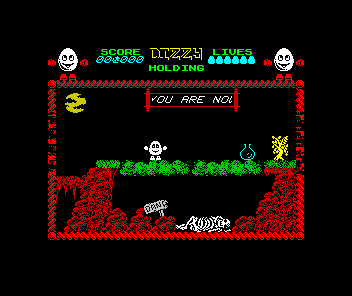
Together with licensed games, budget titles dominated the Spectrum release schedules by the late Eighties. The ovular-obsessed Dizzy was the latest in a successful line of £1.99 games from then-budget specialist Codemasters, and the breakthrough hit for developers the Oliver Twins. Modestly dubbed The Ultimate Arcade Adventure, Dizzy incorporated neat, cute graphics (reflecting the changing demographic of Spectrum owners) and a tried-and-trusted arcade adventure formula, as established years earlier by games such as Mikrogen's Pyjamarama. While not everyone's cup of tea thanks to its restrictive inventory system, and the resulting endless traipsing backwards and forwards, Dizzy was a massive hit among economically-minded gamers, while also instigating a shift towards a more youthful market.
See Also: Knight Tyme - Mastertronic (1986)
Cybernoid - Hewson (1988)
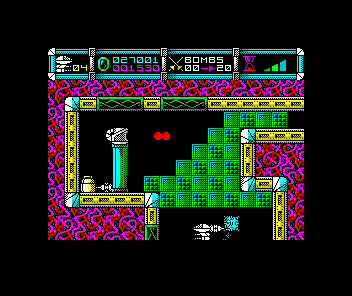
With the era of the bedroom programmer a distant memory by 1988, most major software publishers were either utilising their own in-house teams or farming their projects out. One of the last famous solo programmers was Raffaele Cecco, who had hit the big time for Hewson with the colourful run 'n' gunner Exolon in 1987. However, it was with the thoughtful and patient shoot-'em-up Cybernoid that Cecco cemented his reputation, demonstrating that the ageing Spectrum could still produce amazingly striking and playable games. Working within the limits of the computer and conquering its disadvantages was an excellent training ground for future coders - and there were few greater than the legendary Cecco.
See Also: Exolon - Hewson (1987)
